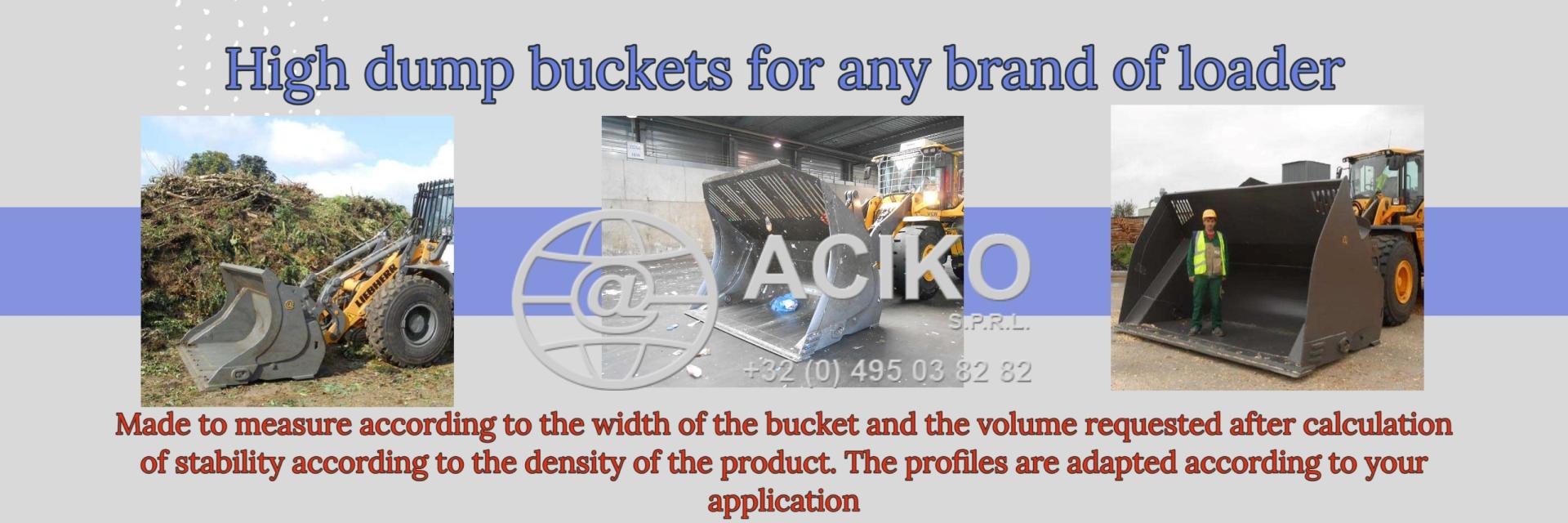Damping models could enable faster construction of buildings
 21/09/23-FR-English-NL-footer
21/09/23-FR-English-NL-footer
Les modèles d'amortissement pourraient permettre une construction plus rapide de bâtiments

Image- University of Bristol
Les bâtiments à plusieurs étages sont assemblés avec précaution pour résister à la force du vent, ont découvert les chercheurs. En effet, il existe plusieurs difficultés dans l'estimation de l'amortissement – la méthode d'élimination de l'énergie afin de contrôler avec précision les mouvements vibratoires comme le bruit et les oscillations mécaniques dans les immeubles de grande hauteur.
Les résultats, publiés aujourd'hui dans la revue Structures, abordent cet inconvénient et ont été compilés par une équipe de l'Université de Bristol qui a étudié les caractéristiques d'amortissement et de fréquence naturelle d'un bâtiment de 150 m de haut à Londres (Royaume-Uni) obtenues à partir d'une étude à grande échelle. réponses induites par le vent à l'aide d'un système de surveillance minimal.
En général, la réponse d'une structure soumise à un chargement dynamique est fortement affectée par son amortissement.
Certains modèles mathématiques d'amortissement ont été développés et utilisés pour des raisons de commodité, bien qu'ils ne puissent pas décrire avec précision le processus physique qui les sous-tend. En fait, l’absence de principes universellement acceptés pour prédire les facteurs d’amortissement dans des systèmes complexes a conduit à l’utilisation de modèles essentiellement empiriques qui ne peuvent être généralisés avec précision à tous les types de bâtiments. L'un des objectifs de cette recherche vise à remédier à cet inconvénient en étudiant l'amortissement
L'auteur principal Daniel Gonzalez-Fernandez de l'École d'ingénierie civile, aérospatiale et de conception de Bristol a expliqué : « Après avoir évalué les paramètres modaux identifiés par rapport à une série de facteurs, notamment le temps, l'amplitude, la vitesse et la direction du vent, les effets dominants ont été trouvés. être l'amplitude et le temps dans le cas des fréquences propres et l'amplitude dans le cas des taux d'amortissement.
« Les changements dans les fréquences naturelles identifiées, avec le temps de surveillance et les amplitudes de réponse, sont attribués respectivement à l’augmentation de la masse due à l’occupation croissante et au ramollissement structurel de grande amplitude.
"Les tendances identifiées entre l'amortissement total mesuré et la vitesse du vent pour différentes directions relatives du vent indiquent que l'amplitude du mouvement latéral du bâtiment, plutôt que les caractéristiques aérodynamiques du vent, influence principalement la variation observée de l'amortissement modal."
L'équipe a utilisé un ensemble de trois accéléromètres et un anémomètre à ultrasons pour mesurer les vibrations induites par le vent et les conditions de vent associées au sommet de la structure sur une période d'un an depuis sa construction initiale.
Les fréquences naturelles et les taux d'amortissement ont été identifiés à partir des densités spectrales de puissance d'accélération estimées et corrélés aux données de vent. Plusieurs paramètres environnementaux ont été étudiés, notamment l'ampleur et la direction relative du vent par rapport au mouvement du bâtiment. Un modèle par éléments finis de la tour a également été utilisé pour étayer les observations expérimentales.
Les effets du vent constituent une préoccupation majeure dans la conception des bâtiments de grande hauteur. Dans ce contexte, une incertitude importante peut être attribuée à des phénomènes importants tels que l'amortissement et ses sources. De plus, étant donné la complexité de ces systèmes, les modèles prédictifs sous-jacents nécessitent une validation. C’est là que les caractéristiques modales mesurées in situ, telles que les fréquences propres et l’amortissement modal, constituent une ressource essentielle pour la mise à jour du modèle.
Daniel a déclaré : « Pour les immeubles de grande hauteur, le confort des occupants est directement lié au balancement induit par le vent, qui peut interférer avec les activités quotidiennes et le bien-être général des occupants. De plus, ces connaissances pourraient être appliquées à l’avenir pour améliorer la conception et atténuer les effets négatifs des vibrations sur les structures afin d’améliorer leurs performances, d’augmenter leur durée de vie et de réduire le risque de défaillance.
« La compréhension de ces problèmes est devenue plus cruciale ces dernières années, car les immeubles de grande hauteur ont tendance à devenir plus élancés et donc plus sensibles aux vibrations induites par le vent. »
NJC.© Info University of Bristol
---------------------------------------------------------------------------------------------------------------------
 21/09/23-English
21/09/23-English
Damping models could enable faster construction of buildings

Image- University of Bristol
Multi-storey buildings are assembled over cautiously to withstand wind strengths, researchers have found. This is because there are several difficulties in estimating damping – the method of removing energy in order to control vibratory motion like noise and mechanical oscillation, accurately in high-rise buildings
The findings, published today in the journal Structures, addresses the draw back and were compiled by a team at the University of Bristol who studied the damping and natural frequency characteristics of a 150 m tall building in London (UK) obtained from the full-scale wind-induced responses using a minimal monitoring system.
In general, the response of a structure subjected to dynamic loading is strongly affected by its damping.
Some mathematical damping models have been developed and used for convenience, though they cannot accurately describe the physical process behind them. In fact, the lack of universally accepted principles to predict the damping factors in complex systems has led to the use of predominantly empirical models which cannot be generalised accurately to all types of buildings. As one of the objectives, this research intends to address this drawback by studying the damping
Lead author Daniel Gonzalez-Fernandez from Bristol’s School of Civil, Aerospace, and Design Engineering explained: “After evaluating the identified modal parameters in relation to a series of factors, including time, amplitude, wind speed and wind direction, the dominant effects were found to be amplitude and time in the case of natural frequencies and amplitude in the case of damping ratios.
“The changes in the identified natural frequencies, with the monitoring time and response amplitudes, are attributed to the mass increase under the increasing occupancy and large-amplitude structural softening, respectively.
“The identified trends between the measured total damping and wind speed for different relative wind directions indicate that the amplitude of the lateral building motion, rather than aerodynamic wind characteristics, primarily influence the observed variation in the modal damping.”
The team used a set of three accelerometers and an ultrasonic anemometer to measure the wind-induced vibrations and associated wind conditions on top of the structure over a period of one year since it was first constructed.
The natural frequencies and damping ratios were identified from the estimated acceleration Power Spectral Densities and correlated with the wind data. Several environmental parameters were investigated, including the magnitude and the relative directions of the wind with respect to the building motion. A finite element model of the tower was also employed to support the experimental observations.
Wind effects are a primary concern in the design of tall buildings. In this context, significant uncertainty can be attributed to important phenomena such as damping and its sources. Additionally, given the complexity of these systems, the underlying predictive models require validation. This is where the in-situ measured modal characteristics, such as the natural frequencies and modal damping, provide an essential resource for model updating.
Daniel said: “For tall buildings, occupant comfort is directly related to wind-induced sway, which can interfere with the occupants’ daily activities and general well-being. In addition, these insights might be applied in future to improve the design and mitigate the negative effects of the vibrations on the structures to enhance their performances, increase their lifespans and reduce failure risk.
“Understanding these issues has become more critical in recent years since there is a trend for tall buildings to become more slender and hence more sensitive to wind-induced vibrations.”
NJC.© Info University of Bristol
------------------------------------------------------------------------------------------------------------------
 21/09/23-NL
21/09/23-NL
Dempingsmodellen kunnen een snellere constructie van gebouwen mogelijk maken

Image- University of Bristol
Gebouwen met meerdere verdiepingen worden voorzichtig opgebouwd om de windsterkte te weerstaan, hebben onderzoekers ontdekt. Dit komt omdat er verschillende problemen zijn bij het inschatten van demping – de methode om energie te verwijderen om trillingsbewegingen zoals geluid en mechanische trillingen nauwkeurig te controleren in hoge gebouwen
De bevindingen, vandaag gepubliceerd in het tijdschrift Structures, gaan in op het nadeel en zijn samengesteld door een team van de Universiteit van Bristol dat de dempings- en natuurlijke frequentiekarakteristieken van een 150 meter hoog gebouw in Londen (VK) heeft bestudeerd, verkregen uit de volledige schaal door wind veroorzaakte reacties met behulp van een minimaal monitoringsysteem.
Over het algemeen wordt de respons van een constructie die wordt blootgesteld aan dynamische belasting sterk beïnvloed door de demping ervan.
Voor het gemak zijn enkele wiskundige dempingsmodellen ontwikkeld en gebruikt, hoewel ze het fysieke proces erachter niet nauwkeurig kunnen beschrijven. In feite heeft het gebrek aan universeel aanvaarde principes om de dempingsfactoren in complexe systemen te voorspellen geleid tot het gebruik van overwegend empirische modellen die niet nauwkeurig kunnen worden gegeneraliseerd naar alle soorten gebouwen. Als een van de doelstellingen wil dit onderzoek dit nadeel aanpakken door de demping te bestuderen
Hoofdauteur Daniel Gonzalez-Fernandez van Bristol's School of Civil, Aerospace, and Design Engineering legde uit: “Na evaluatie van de geïdentificeerde modale parameters in relatie tot een reeks factoren, waaronder tijd, amplitude, windsnelheid en windrichting, werden de dominante effecten gevonden dit is amplitude en tijd in het geval van natuurlijke frequenties en amplitude in het geval van dempingsverhoudingen.
“De veranderingen in de geïdentificeerde natuurlijke frequenties, met de monitoringtijd en responsamplitudes, worden toegeschreven aan respectievelijk de massatoename onder de toenemende bezetting en structurele verzachting met grote amplitude.
“De geïdentificeerde trends tussen de gemeten totale demping en windsnelheid voor verschillende relatieve windrichtingen geven aan dat de amplitude van de laterale bouwbeweging, en niet zozeer de aerodynamische windkarakteristieken, primair de waargenomen variatie in de modale demping beïnvloedt.”
Het team gebruikte een set van drie versnellingsmeters en een ultrasone anemometer om de door de wind veroorzaakte trillingen en de daarmee samenhangende windomstandigheden bovenop de constructie te meten gedurende een periode van een jaar sinds de eerste constructie ervan.
De natuurlijke frequenties en dempingsverhoudingen werden geïdentificeerd op basis van de geschatte versnellingsspectrale vermogensdichtheden en gecorreleerd met de windgegevens. Verschillende omgevingsparameters werden onderzocht, waaronder de omvang en de relatieve richtingen van de wind ten opzichte van de beweging van het gebouw. Ter ondersteuning van de experimentele waarnemingen werd ook een eindige-elementenmodel van de toren gebruikt.
Windeffecten zijn een primair aandachtspunt bij het ontwerp van hoge gebouwen. In deze context kan aanzienlijke onzekerheid worden toegeschreven aan belangrijke fenomenen zoals demping en de bronnen ervan. Bovendien vereisen de onderliggende voorspellende modellen, gezien de complexiteit van deze systemen, validatie. Dit is waar de in-situ gemeten modale kenmerken, zoals de natuurlijke frequenties en modale demping, een essentiële hulpbron vormen voor het bijwerken van modellen.
Daniel zei: “Voor hoge gebouwen houdt het comfort van de bewoners rechtstreeks verband met door de wind veroorzaakte slingeringen, die de dagelijkse activiteiten en het algemene welzijn van de bewoners kunnen verstoren. Bovendien kunnen deze inzichten in de toekomst worden toegepast om het ontwerp te verbeteren en de negatieve effecten van de trillingen op de constructies te verminderen om hun prestaties te verbeteren, hun levensduur te verlengen en het faalrisico te verminderen.
“Het begrijpen van deze problemen is de afgelopen jaren steeds belangrijker geworden, omdat er een trend is dat hoge gebouwen slanker worden en dus gevoeliger voor door de wind veroorzaakte trillingen.”
NJC.© Info University of Bristol
------------------------------------------------------------------------------------------------------------
Date de dernière mise à jour : 20/09/2023
















